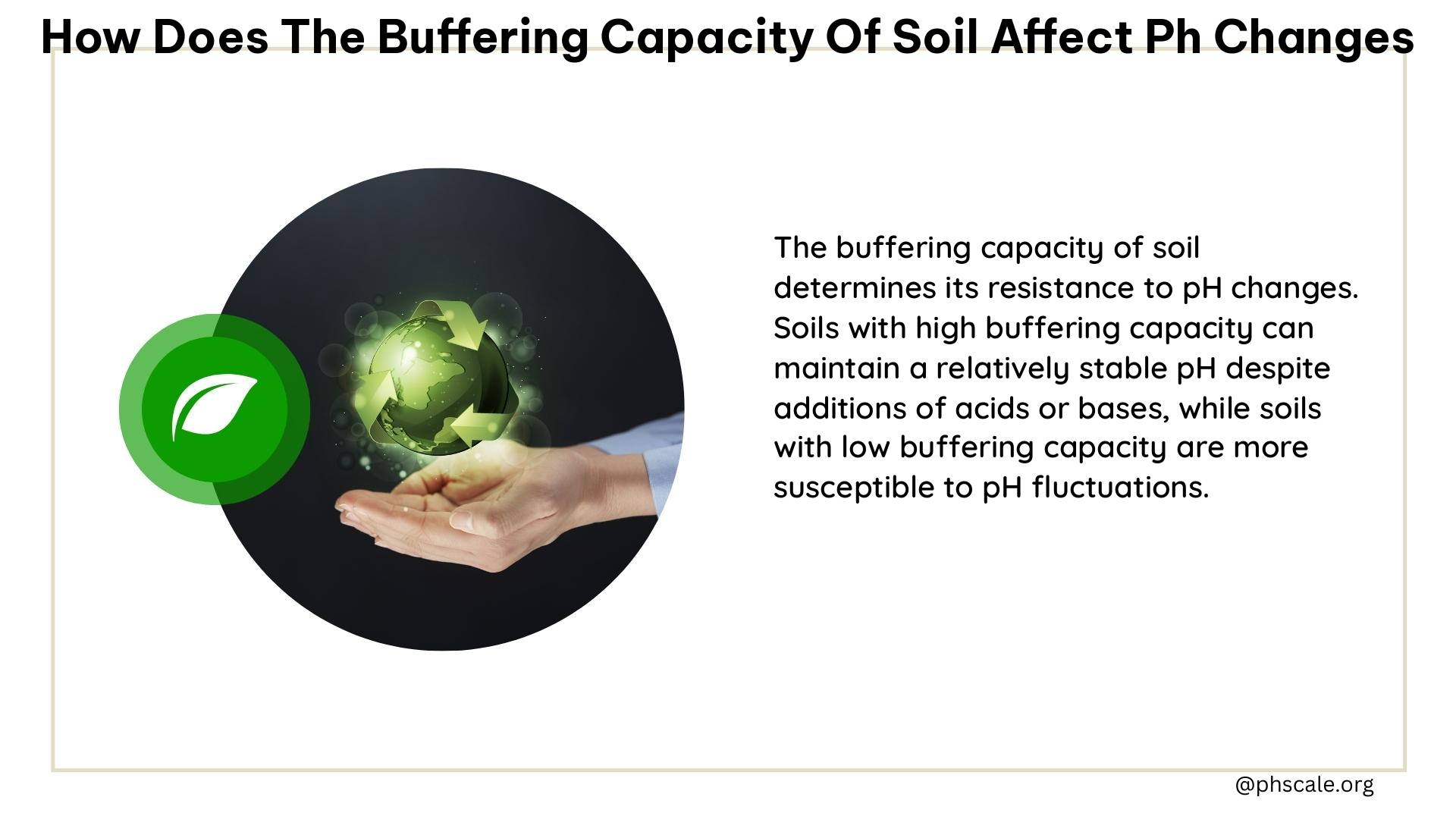The buffering capacity of soil plays a crucial role in regulating pH changes by resisting changes in the concentration of hydrogen ions (H+). This capacity is primarily influenced by the presence of minerals and organic matter in the soil. Understanding how the buffering capacity of soil affects pH changes is essential for maintaining optimal soil conditions and supporting plant growth.
Cation Exchange Reactions and Soil Buffering Capacity
Soil buffering capacity is mainly due to cation exchange reactions involving minerals and organic matter. These reactions help maintain a stable pH by absorbing or releasing H+ ions as needed. When the soil pH changes, the cation exchange sites on soil particles can either release or adsorb H+ ions to counteract the change and maintain a stable pH.
The Role of Organic Matter in Soil Buffering

The presence of organic matter, such as humic and fulvic acids, contributes significantly to soil buffering capacity. These weakly acidic functional groups act as sinks for H+ and OH- ions, stabilizing the pH. As the soil pH changes, the organic matter can either release or adsorb H+ ions to maintain a stable pH.
Mineral Composition and Soil Buffering Capacity
The type and amount of minerals in the soil, such as aluminosilicates and calcium carbonate, also affect buffering capacity. For example, aluminosilicate dissolution at low pH and calcium carbonate dissolution at high pH help maintain a stable pH. These mineral reactions can neutralize excess H+ or OH- ions, preventing drastic pH changes.
Soil pH Range and Buffering Capacity
The pH of most soils ranges from 4.0 to 8.0 due to the buffering effect of different soil components. This range is critical for maintaining optimal conditions for plant growth and microbial activity. Soils with higher buffering capacity can maintain a stable pH within this range, even in the face of external factors that may cause pH changes.
Soil Texture and Buffering Capacity
Soil texture also influences buffering capacity. Clayey soils tend to have a larger reservoir of basic materials, making them more resistant to pH changes than sandy soils. The higher surface area and cation exchange capacity of clay particles contribute to their greater buffering capacity.
Liming, Amendments, and Buffering Capacity
Adding lime or organic amendments to the soil can alter its buffering capacity. For instance, liming can increase the pH and buffering capacity of acidic soils, while organic matter additions can stabilize the pH by increasing the presence of weakly acidic functional groups.
Buffering Capacity and Nutrient Availability
Soil buffering capacity affects the availability of nutrients for plants. A stable pH ensures optimal conditions for nutrient uptake and utilization, which is critical for plant growth and productivity. Soils with higher buffering capacity can maintain a suitable pH range, ensuring that essential nutrients remain available to plants.
Resistance to Acidification and Buffering Capacity
Soils with higher buffering capacity are more resistant to acidification, which helps maintain a stable ecosystem. This is particularly important in agricultural soils where nutrient cycling and microbial activity are critical. By resisting pH changes, the buffering capacity of soil helps preserve the delicate balance of the soil ecosystem.
In conclusion, the buffering capacity of soil is a crucial factor in regulating pH changes. By understanding the role of cation exchange reactions, organic matter, mineral composition, soil texture, and amendments, we can better manage soil pH and maintain optimal conditions for plant growth and ecosystem health.
References:
- Zheng, S., Huang, M., Zhu, Q., Xue, L., & Zeng, G. (2022). Quantifying pH buffering capacity in acidic, organic-rich Arctic soils. Geoderma, 406, 115527. https://doi.org/10.1016/j.geoderma.2021.115527
- CTAHR. (n.d.). Soil Acidity and Liming. University of Hawaii. https://www.ctahr.hawaii.edu/oc/freepubs/pdf/SCM-9.pdf
- Oklahoma State University Extension. (2017). Soil pH and Buffer Index. Oklahoma State University. https://extension.okstate.edu/fact-sheets/soil-ph-and-buffer-index.html
- Lu, H., Jiang, X., Ren, T., Cai, Z., & Xu, X. (2022). Effects of the increases in soil pH and pH buffering capacity induced by crop residue biochars on available Cd contents in acidic paddy soils. Science of The Total Environment, 806, 150688. https://doi.org/10.1016/j.scitotenv.2021.150688
- NCBI. (2022). Effect of different soil amendments on soil buffering capacity. National Center for Biotechnology Information. https://www.ncbi.nlm.nih.gov/pmc/articles/PMC9032524/
